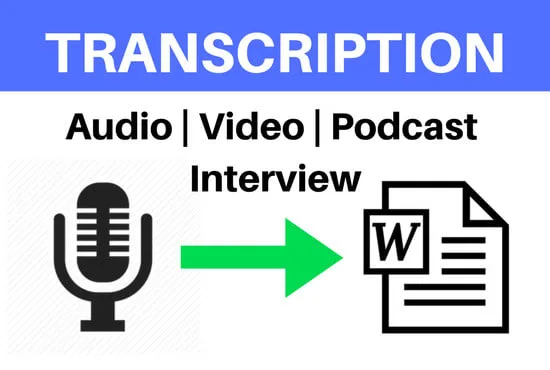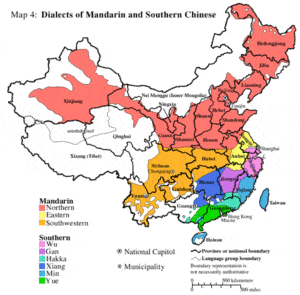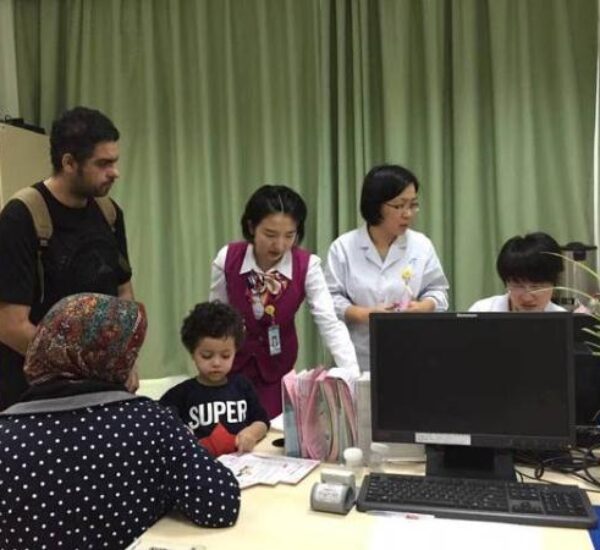Recently updated on February 21st, 2024 at 07:55 pm
With the fastening pace of globalization and the fact that Mandarin has the most speakers in the world, it’s crucial for companies to transcribe Chinese audio to text to provide multilingual support for their products and services.
What’s Transcription?
Transcription means listening to an audio clip or watching a video and then typing out what’s said in the audio or video clip. Occasionally, time codes of the transcribed speeches may be required.
Why Is It Important to Transcribe Chinese Audio to Text?

With 873 million native speakers, Mandarin Chinese is the most spoken language in the world. It is the official language in mainland China, Hong Kong, Taiwan, Macau, and Singapore.
What Are the Challenges to Transcribe Chinese Audio to Text?
Challenges are a part of professional Chinese transcription services. But with a team of expert transcribers on board, it becomes easier to deal with them. Having said that, it’s not an easy task to transcribe Chinese audio to text due to following reasons:
#1 Dialects and Accents

There are hundreds of spoken dialects in the Chinese language family, with Mandarin and Cantonese as the two most prominent. The two are not mutually intelligible, which means a video in Cantonese may be hard to understand for people who speak Mandarin.
In addition, speakers with strong accents, the use of local idioms, jargons, etc. contribute to the complexity when trying to transcribe Chinese audio to text.
#2 Quality of the Recording
The next level of complications comes from the various elements of audio. These elements can be the background noise, the number of speakers, clarity of audio, speed of conversation, etc.
Can You Use Machine Transcription for Mandarin Audio?
The answer depends on a few factors, the quality of your audio, speakers accent, the machine transcription software you use.
Suppose you’re using a powerful machine transcription tool, then whether machine transcription tool can help or not depends on the audio quality and whether the speakers speak in standard Mandarin.
High Quality Recording + Standard Mandarin
If your audio is well recorded with speakers talking in standard Mandarin without any accent in a quite environment, for instance, a radio weather broadcast or a lecture, machine translation tool usually does a great job. It’s highly recommend to use machine transcription software for this type of recording. 💡 It’s suggested to have the machine transcribed texts proofread and edited by an expert Chinese transcription services provider.
Low Quality Recording + Accents/Dialect/Jargons
If your audio is poorly recorded in a noisy environment with low speaking voices, accents, speakers speaking over each other, or it contains lots of jargons, machine translation can’t understand it and accurately transcribe it. In this case, we suggest hiring a professional Mandarin transcription services provider.
When Should You Choose Human Transcription Over Machine Transcription?
As we mentioned above, if your audio is poorly recorded with accents, dialects, speaking talking over each other, etc., we suggest using human transcription.
Depending on the recording quality, some audios are completely inaudible, even professional transcription team with decades of experience can’t help, let alone machine translation that relies on speech recognition technology.
In addition, some people choose human transcription for
Confidentiality
💡 If keeping the recording information strictly confidential is your top priority, you wouldn’t want to use unknown transcription software or upload your recordings to platforms that you don’t know whether they would sell your information later.
In this case, the best way out is to hire a professional service provider to transcribe Chinese audio to text and sign a non-disclosure agreement.
This is especially important for audios involving
Family affairs, attorney-client communications, corporate meetings, research interviews, etc.
Transcribe Chinese Audio to Text with Chinese Copywriter
If you’re seeking high-quality Chinese dialect transcription services, look no further than Chinese Copywriter. As a transcription company that specializes in the Chinese languages, our experienced project managers and linguist teams can work with several different Chinese dialects such as Mandarin, Cantonese, Hokkien, Wu and produce extremely precise, professionally formatted transcripts.
We work with podcasters, medical and healthcare providers, students and lecturers, law firms, and video game developers to transcribe Chinese audio to text each month. Our highly precise transcripts can be used for research, business, education, or anything else.
Formats of Audio/Video We Accept
Below is the list of popular audio formats we support for translation.
Audio
AAC, AIF, AIFC, AIFF, AMR, AU, CAF, DSS, FLAC, GSD, GSM, M2V, M4A, MP2, MP3, MPGA, MTS, MUS, OGA, OGG, OGV, OGX, RM, SWF, TS, WAV, WEBM, WMA, WMV, XSPF
Video
3GP, AVI, FLV, M4V, MK3D, MOOV, MOV, MP4, MPA, MPE, MPEG, MPG, MXF, QT, VOB, WEBA
Chinese-English Transcription Style Guide by Chinese Copywriter
# Speaker Identification
- Do not use a speaker identification if there is only one speaker.
- If the speaker’s name is known, use the speaker’s full name as identification. Exceptions: If a speaker is identified by a title throughout, then use the title and last name. Examples: Professor Wang, Dr. Ma.
- For focus group recordings, identify the focus group leader as “Moderator” or “Facilitator”. Participants can be identified by name if their names are provided. Otherwise, use “Man” and “Woman” for identification. If there are several women and men, then number the speakers as “Man 1”, “Man 2”, “Woman 1”, “Woman 2”, or “Male 1”, “Male 2”, “Female 1”, and “Female 2”.
# Inaudible Speech
When there is a word or phrase in the recording you cannot hear or understand, insert [inaudible hh:mm:ss] in place of the unknown word or phrase. Replace the “hh:mm:ss” with the timestamp of where the inaudible speech begins. Example: [inaudible 01:20:15]
# Interruptions and Incomplete Sentences
Use periods plus spaces when there is a change of thought in the middle of a sentence, or the speaker doesn’t complete a sentence. Example: Female Speaker 2: I might not accept his invitation … well, maybe I’m just …
# Spelling
- Be consistent in the spelling of words throughout the transcript.
- Use Grammarly for spell check.
- Do not emphasize a word using all capital letters except to indicate screaming.
- Use client instructions, the internet, dictionaries, glossaries, style guides, etc. to verify the spelling of words, places, and technical terms.
Frequently Asked Questions
How long does it take to transcribe Chinese audio to text?
The standard turnaround time for our Mandarin transcription services is 24 hours with 99% accuracy by our native subject-matter transcriptionists.
Can I upload Mandarin files from other platforms?
Sure, you can! We support importing audio/video files from many platforms such as Google Drive, Dropbox, Wistia, Vimeo, and YouTube.
How can I get a better transcription accuracy for my Skype recordings?
In order to get higher accuracy, below are the things you should pay attention to:
1. High audio quality
2. Few background noise
3. High-quality microphone
4. Speak directly to the microphone
Whether you’re a journalist, a podcast owner, or a freelancer, Chinese Copywriter’s state of the art transcription services get you covered. Send us an inquiry now and receive an instant quotation.

Digital Entrepreneur and Co-Founder of Chinese Copywriter
Having lived and worked in Europe for 6 years, Ting returned to her hometown Guangzhou with the mission to help international businesses succeed in the Chinese market. With 15 years of marketing / web design background, Ting has proven records of digital marketing successes in China. Ting has been featured on diverse mainstream medias in China, including Southern TV, Sina News, Toutiao News, GRT News, etc.



